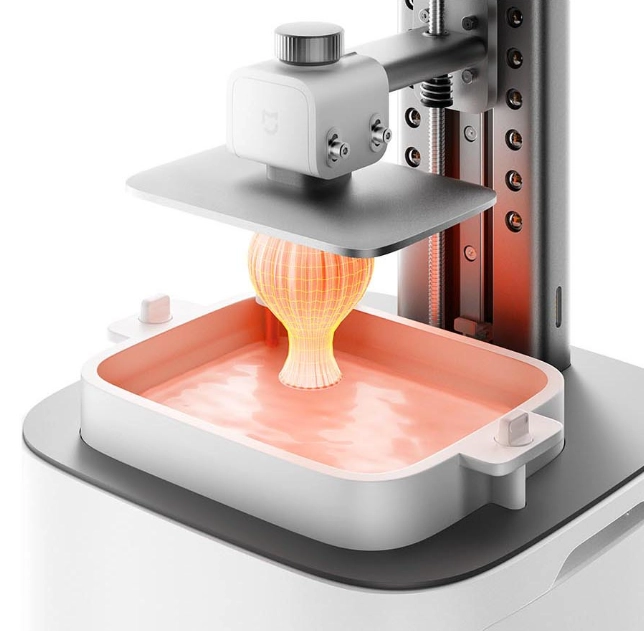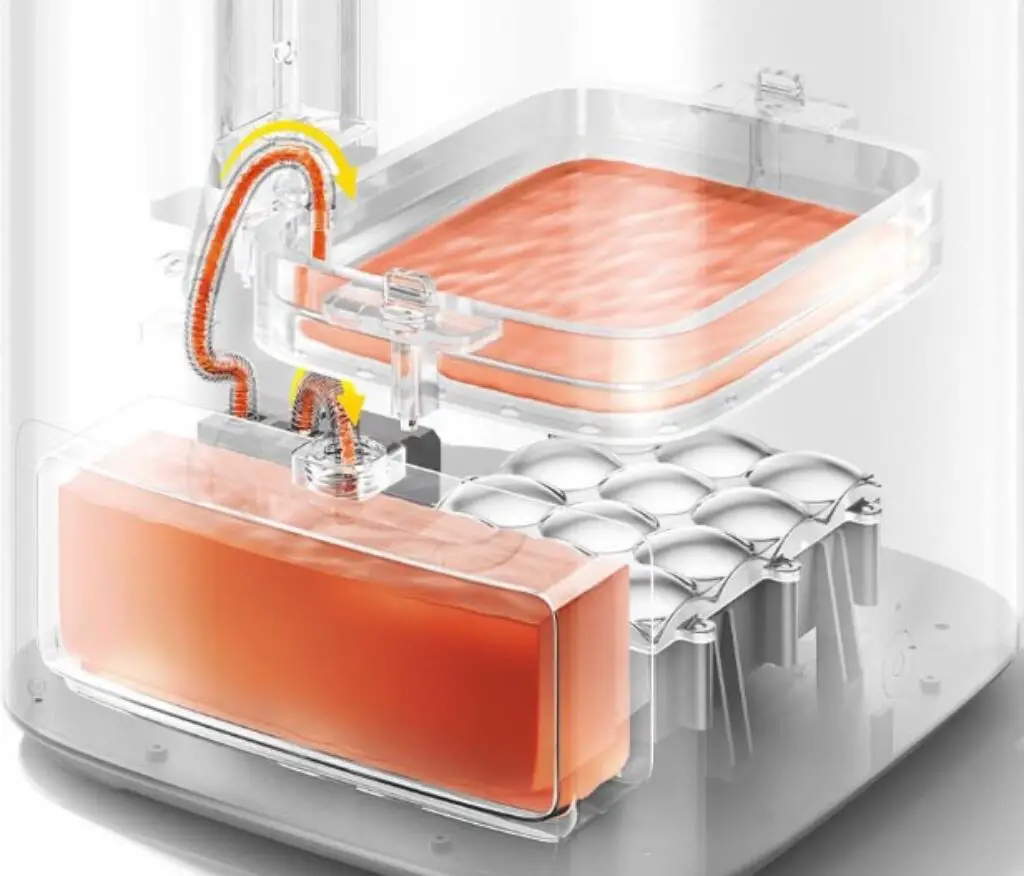Chinese electronics manufacturer Xiaomi has entered the 3D printing industry with the Mijia 3D printer. Not only is the LCD-based digital light processing (DLP) system unique, in that it combines printing and curing capabilities within a single device, but it’s also cheap. Xiaomi’s move into additive manufacturing (AM) may represent a new era of disruption to low-cost 3D printing.
The Mijia has a retail price of 1999 yuan ($279), but can be bought at a special crowdfunding price of 1699 yuan ($237) on the company’s own crowdfunding platform, Xiaomi Youpin. The product is slated for availability in China starting August 10 and is designed to be compatible with an accompanying Mijia app, allowing for remote control and monitoring of the printing process.
The Mijia 3D Printer stands out due to its dual-function design that incorporates printing and curing within the same device. Parts are first printed using the system’s custom LCD screen and then cured with the same light engine once the print has been cured. With a petite build volume of 118 x 65 x 160 mm (4.65 x 2.56 x 6.30 in), the printer is also unique in that it includes automatic resin loading and recovery, not even available with higher end DLP machines. Other features include automatically generated printing parameters, adjusted to the design the CAD file, as well as a built-in library of printable models.
The desktop 3D printing market has already been disrupted multiple times since the open-source revolution of the last decade. First, pioneers like Formlabs lowered the price of vat photopolymerization to the sub-$5,000 level. Then, a series of Chinese firms were able to drop this cost to below $500 and even $200.
More recently, the polymer extrusion segment has been shaken enormously by the introduction of the Bambu Lab printers, which are incredibly fast while also very reliable. This occurred under the guidance of ex-DJI employees, who had already conquered the consumer drone market. Bambu Lab triggered a number of other brands to follow suit such that the desktop market may never be able to return to the slower, finickier material extrusion machines of the past.
When it comes to the world’s largest smartphone manufacturers, Xiaomi Corporation is second only to Huawei, taking in over $40 billion annually. In other words, it has the heft to single-handedly conquer nearly any tech space it enters. Given what Bambu is doing to material extrusion, now would be an ideal time for a company like Xiaomi to do the same for DLP printers. By incorporating features like built-in curing and automatic material loading and recovery, it may be able to do so. That is, if the printer can deliver on speed, user-friendliness, and reliability.
Regardless of whether or not Xiaomi is able to do so, it is notable that the company is entering the space at all when there are countless, smaller competitors in the market. Because it is directed at consumers, the Mijia could be a short-run experiment that doesn’t pan out for the long term.
Subscribe to Our Email Newsletter
Stay up-to-date on all the latest news from the 3D printing industry and receive information and offers from third party vendors.
You May Also Like
Gorilla Sports GE’s First 3D Printed Titanium Cast
How do you help a gorilla with a broken arm? Sounds like the start of a bad joke a zookeeper might tell, but it’s an actual dilemma recently faced by...
Nylon 3D Printed Parts Made More Functional with Coatings & Colors
Parts 3D printed from polyamide (PA, Nylon) 12 using powder bed fusion (PBF) are a mainstay in the additive manufacturing (AM) industry. While post-finishing processes have improved the porosity of...
$25M to Back Sintavia’s Largest Expansion of Metal 3D Printing Capacity Since 2019
Sintavia, the digital manufacturing company specializing in mission-critical parts for strategic sectors, announced a $25 million investment to increase its production capacity, the largest expansion to its operations since 2019....
Velo3D Initiates Public Offering in a Bid to Strengthen Financial Foundations and Drive Future Growth
Velo3D (NYSE: VLD) has been among a number of publicly traded 3D printing firms that have attempted to weather the current macroeconomic climate. After posting a challenging financial report for 2023,...


































